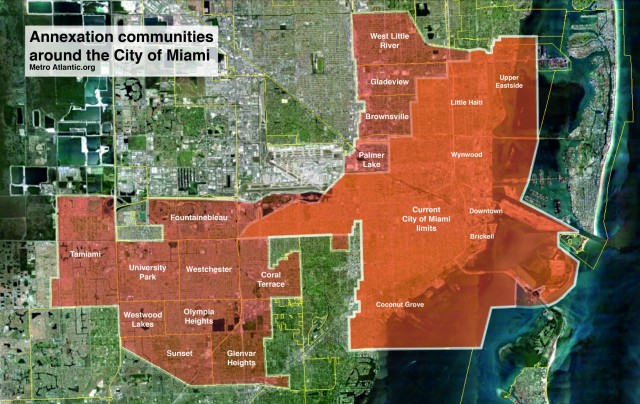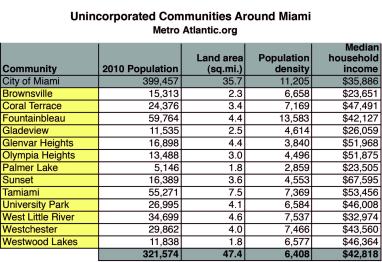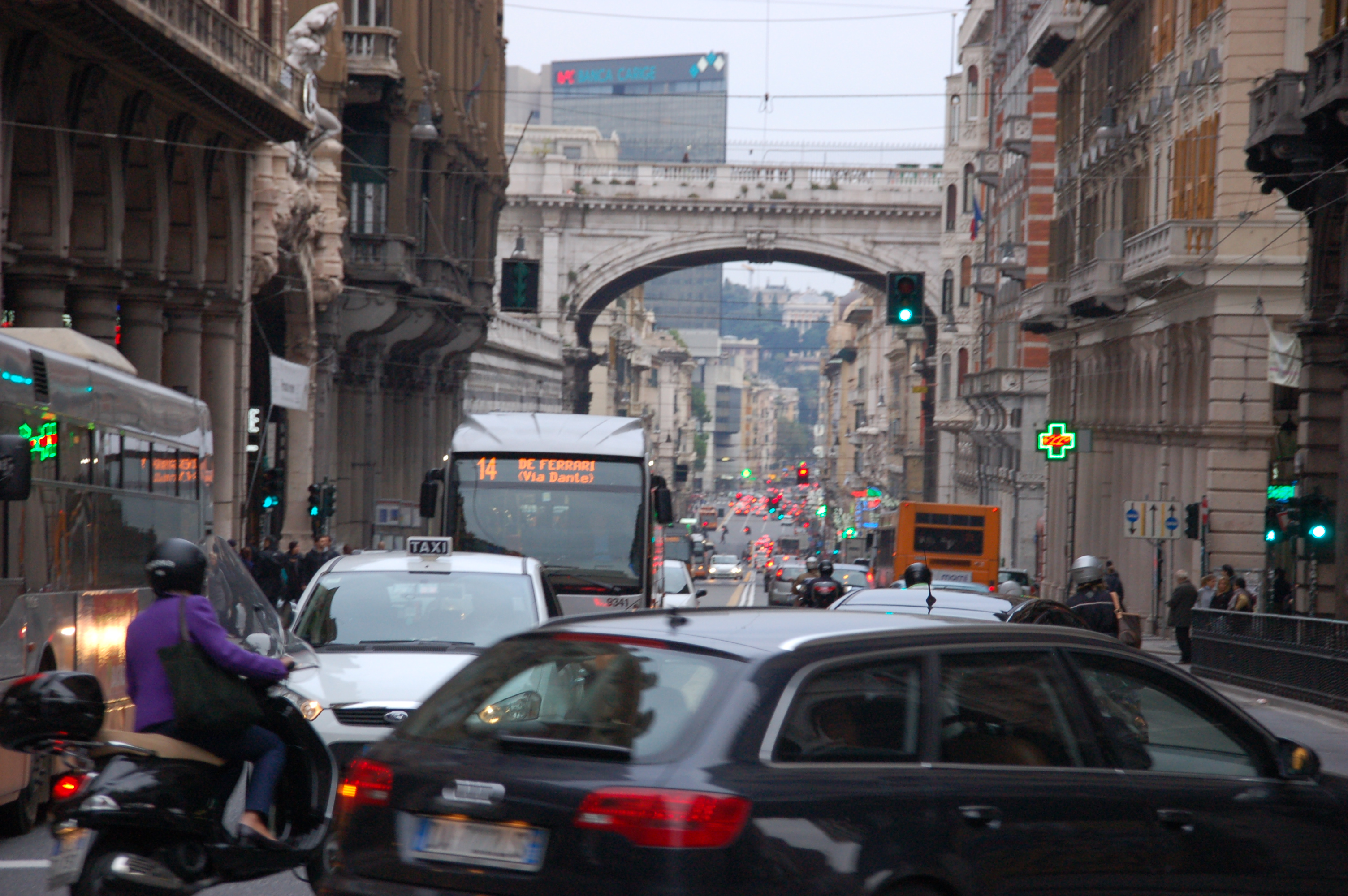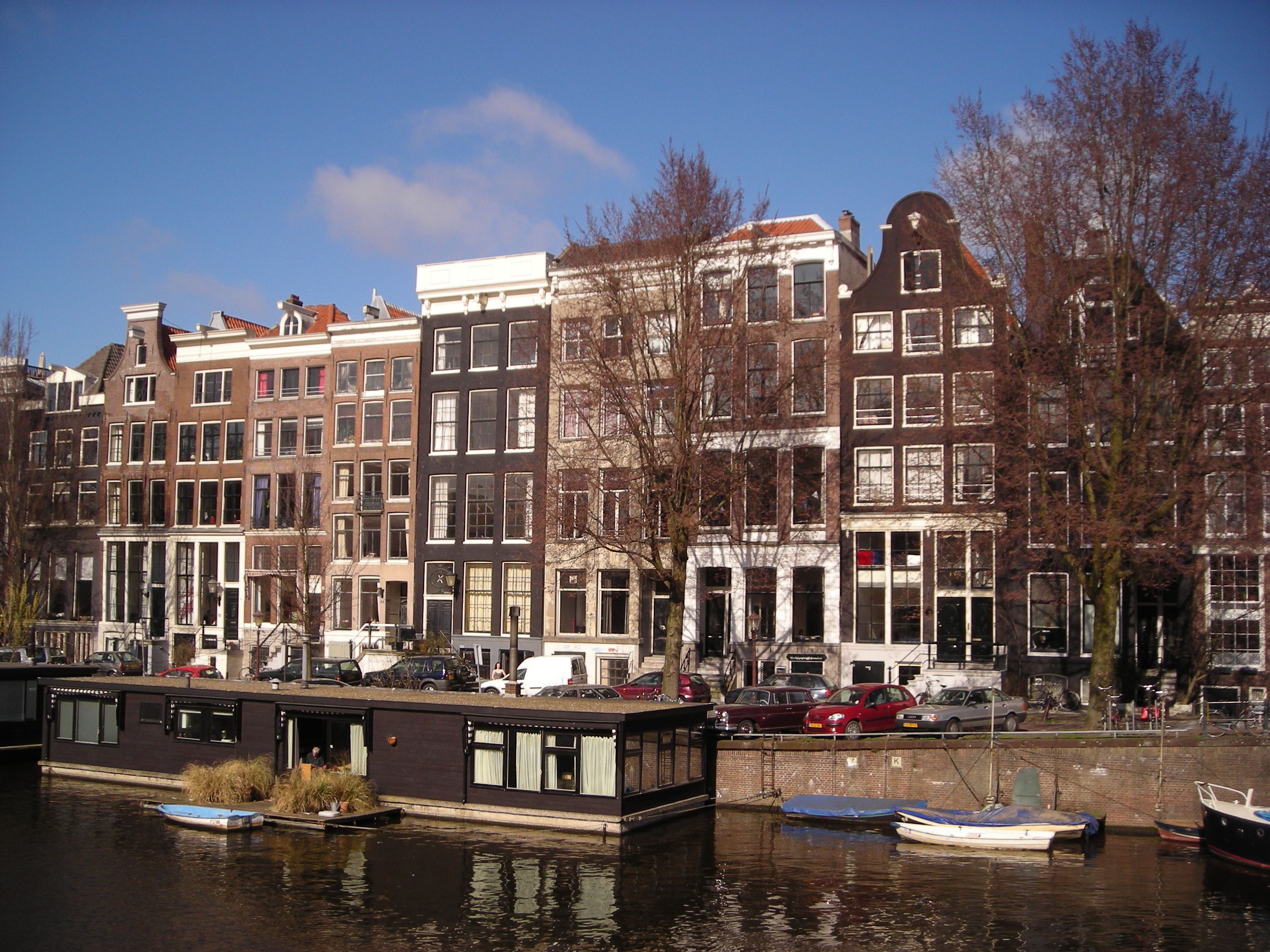What if Miami annexed all the unincorporated communities around it? What would the city look like?
Over half of Miami-Dade County residents live in an unincorporated area of the county. That means they live in no particular municipality but instead, under the direct jurisdiction of the county. If you are one of the 1.2 million that live in unincorporated Miami-Dade, and live in neighborhoods like Country Walk, Kendall, Golden Glades or Westchester, you probably just say you live in “Miami.” “Miami” is an umbrella term for all of Miami-Dade and its standard for lots of places and things in South Florida to get placed under the Miami name, as it is the region’s powerhouse. But what if all these areas really were within the City of Miami?
In the 2010 US Census, the City of Miami had a population of 399,457 in 55.3 square miles of city area, of which only 35.7 are actually land. That leaves the city with a population density of 11,205 residents per square mile. The median household income in the city was $35,886, significantly lower than the national average.
If we looked at the immediate 13 unincorporated areas around the City of Miami and considered annexation for them, what changes? Let’s annex…
- Brownsville
- Coral Terrace
- Fountainebleau
- Gladeview
- Glenvar Heights
- Olympia Heights
- Palmer Lake
- Sunset
- Tamiami
- University Park
- West Little River
- Westchester
- Westwood Lakes
Suddenly, the City of Miami adds 321,574 residents, 47.4 square miles of land and raises its median household income to $39,352. The new City of Miami now has 721,031 residents on 83.1 square miles of land. Miami goes from being the 44th-largest city in the United States to 17th, larger than Detroit, Boston and Washington, DC.

The new City of Miami map if the city annexed the 13 neighboring unincorporated county areas. This new city would have over 720,000 residents.
Aside from new bragging rights of being a dashing big city, what benefits does annexation really bring? Annexation brings higher property taxes on property owners but provides better services to these residents. More parks, stronger police presence, increased investment on city streets, sidewalks and bike lanes and a larger voice in representation at the local level. For the city, it brings a larger tax base, which means more money for the city and its projects (and operations). This money can go to planning and funding bigger scale projects like museums, parks, civic spaces and maybe even transit. Okay, let’s not go overboard. Wishful thinking. But it’s nice to dream big!
What do you think? Should the City of Miami grow by annexing nearby communities or stay the same?






Qué maravilla haber encontrado tu blog! Es increible! Mil enhorabuenas!
¡Gracias!
Hmmm… I enjoyed reading this article.
One of the challenges, though, is manageability. All of a sudden you might have a city that would be very difficult to manage and might just end up like a Detroit, where residents are so spread out that city services become drained, but I imagine, though, that the annexation would not be overnight and would be more gradual.
Also, the shape of the city map would look might wierd. Lol
I enjoyed this article a lot.
One of the challenges is manageability, as city services will have to be spread over a larger population AND geographic area. This is a bit of a non-issue if the annexation process is slow and gradual. If it is one, big swoop, however, it could spell chaos for city services and infrastructure. Finally, I don’t know if I’d like the new COM map. It would look kind of strange and chopped up. I suppose I’d just have to get used to it. 🙂
Thanks for a very thoughtful article.
I thoroughly enjoed reading this article. It is so bizarre that there are so many people living in unincorporated areas. Similar to Las Vegas, most people live in unincorporated areas with less services. Furthermore, the image of Miami is that of a large city, but in reality it is rather small. I believe Miami should annex these areas to become an actual large city and to provide superior services to these residents. I do agree, that it should be a gradual process where each area becomes assimilated into the city as a whole and whose identity becomes part of the city. Additionally, once these areas are annexed, the city can focus on increasing their densities so that it will become easier to provide city services to these newly annexed areas.
Actually, I would argue the exact opposite: the City of Miami should dramatically shrink itself and let all the areas it has already gobbled up go back to being their own political units. The larger government gets, the less people have control over it, the less say about what projects get done, etc. Let’s keep our local political units at under 10,000 residents, maximum. There’s zero democracy at the federal level, only a little at the state level, some at the city level, the most at the block level.
Looking at an area like Liberty City or the non gentrified parts of Overtown (which of course, are never called Overtown any more), I think the residents would be far better off if they had direct control over the laws and spending there (rather than being subject to single use suburban laws passed to protect to protect wealthier areas). Most of the different areas of the City have completely different lifestyles and need to be governed accordingly (laws that make sense on Brickell, don’t make sense in Wynwood, etc. but in a big political entity, everything is the same).